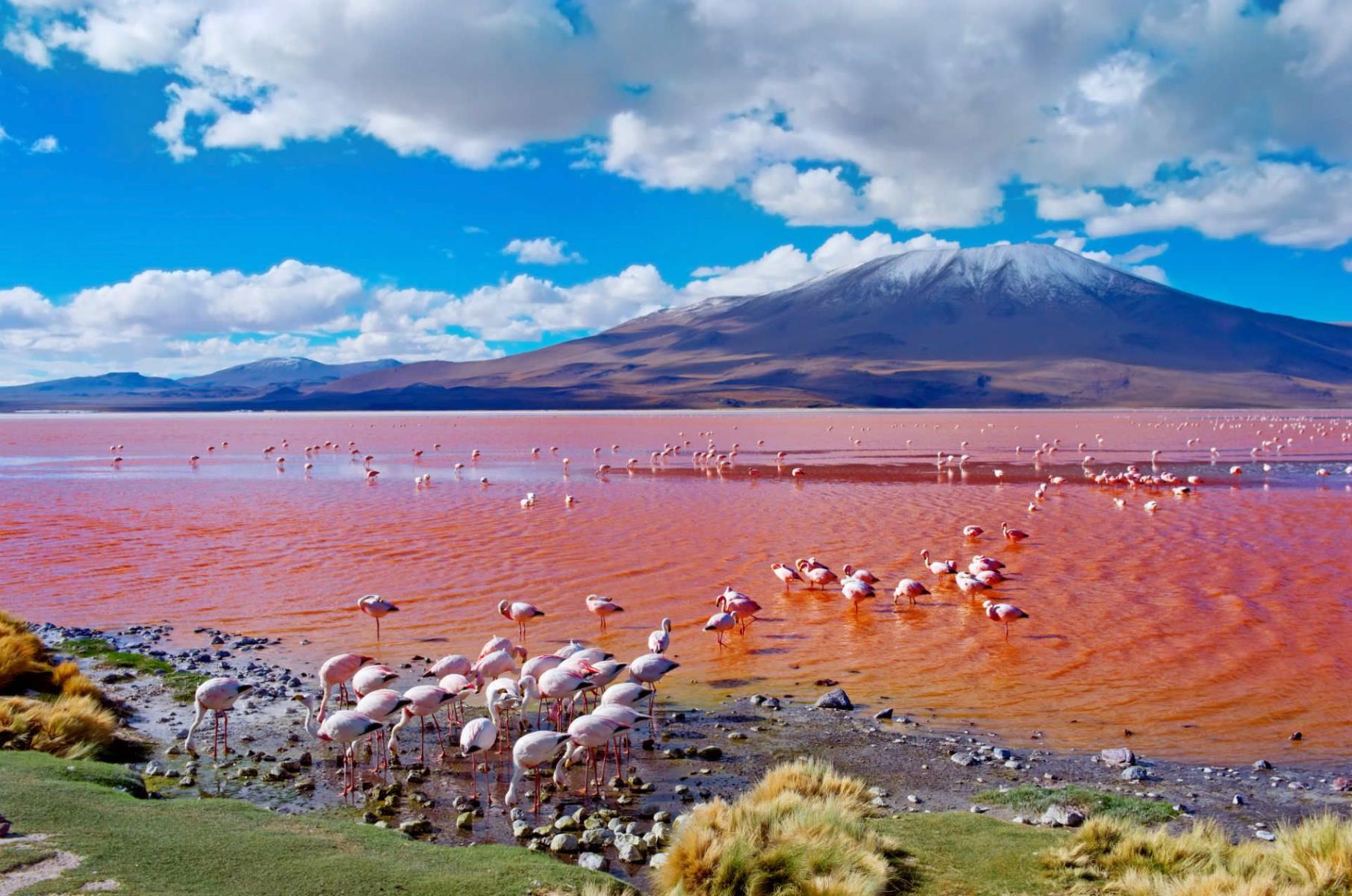Flamingos In The Bolivian Salt Flats

Have you ever wondered where to find some of the most stunning flamingos in the world? Look no further than the Bolivian Salt Flats. This magical place, also known as Salar de Uyuni, is home to thousands of these beautiful birds. Imagine a vast, white landscape stretching as far as the eye can see, dotted with pink flamingos wading through shallow waters. The contrast between the bright white salt and the vibrant pink feathers creates a breathtaking scene. Whether you're a bird enthusiast or just love unique travel experiences, visiting the Bolivian Salt Flats to see flamingos should be on your bucket list.
Flamingos in the Bolivian Salt Flats
The Bolivian Salt Flats, also known as Salar de Uyuni, offer a surreal landscape where flamingos thrive. These pink birds create a striking contrast against the white, reflective salt flats. Here are some of the best spots to witness these beautiful creatures in their natural habitat.
Best Time to Visit
Timing is everything when it comes to seeing flamingos in the Bolivian Salt Flats. The best time to visit is during the wet season, from November to March, when the flats are covered in a thin layer of water, creating a mirror effect.
Salar de Uyuni: The largest salt flat in the world, Salar de Uyuni, is a prime location for spotting flamingos. During the wet season, the flats turn into a giant mirror, reflecting the sky and creating a magical setting for flamingo watching.
Laguna Colorada: Known for its red waters, Laguna Colorada is home to thousands of flamingos. The red hue of the water, caused by algae and minerals, makes for a stunning backdrop for these pink birds.
Unique Flamingo Species
Three species of flamingos can be found in the Bolivian Salt Flats. Each species has unique characteristics that make them fascinating to observe.
James's Flamingo: Also known as the Puna Flamingo, James's Flamingo is the smallest of the three species. They have a distinctive pink coloration with bright red legs and a yellow beak.
Andean Flamingo: The Andean Flamingo is the rarest and largest species found in the region. They have a pale pink body with black flight feathers and yellow legs.
Chilean Flamingo: Slightly larger than James's Flamingo, the Chilean Flamingo has a lighter pink body with greyish legs and a black-tipped beak.
Best Viewing Spots
Certain locations within the Bolivian Salt Flats offer the best views of flamingos. These spots provide optimal conditions for photography and bird watching.
Laguna Hedionda: This lake is known for its high sulfur content, which attracts large flocks of flamingos. The sulfur gives the water a unique greenish tint, adding to the visual appeal.
Laguna Cañapa: Surrounded by mountains, Laguna Cañapa offers a picturesque setting for flamingo watching. The lake's shallow waters make it easy to spot flamingos feeding and interacting.
Tips for Flamingo Watching
To make the most of your flamingo-watching experience, consider these tips. They will help you get the best views and ensure a memorable visit.
Bring Binoculars: Flamingos can be shy and may keep their distance. Binoculars will help you get a closer look without disturbing them.
Wear Appropriate Clothing: The weather in the salt flats can be unpredictable. Dress in layers and bring sun protection, as the reflective surface can intensify the sun's rays.
Hire a Local Guide: A local guide can provide valuable insights and take you to the best spots for flamingo watching. They can also help you navigate the vast salt flats safely.
Conservation Efforts
Efforts are being made to protect the flamingo populations in the Bolivian Salt Flats. These initiatives aim to preserve their natural habitat and ensure their survival for future generations.
Eduardo Avaroa Andean Fauna National Reserve: This protected area is home to many flamingo species and other wildlife. Conservation programs within the reserve focus on habitat preservation and research.
Community Involvement: Local communities play a crucial role in conservation efforts. By promoting sustainable tourism and educating visitors, they help protect the delicate ecosystem of the salt flats.
Flamingos and Salt Flats: A Perfect Pair
Flamingos in the Bolivian Salt Flats offer a unique sight. Their pink feathers against the white salt create a stunning contrast. Visiting this place is like stepping into another world. The flats stretch endlessly, reflecting the sky and creating a mirror effect. Flamingos add life to this surreal landscape. Watching them wade through shallow waters is mesmerizing.
Plan your trip during the dry season for the best experience. Bring a camera to capture the beauty. Don’t forget sun protection; the high altitude and reflective salt can be harsh. Local guides can enhance your visit with their knowledge.
This destination is perfect for nature lovers and photographers. It’s a chance to see something truly unique. Flamingos in the Bolivian Salt Flats are a sight you won’t forget. Make sure to add this to your travel bucket list.

